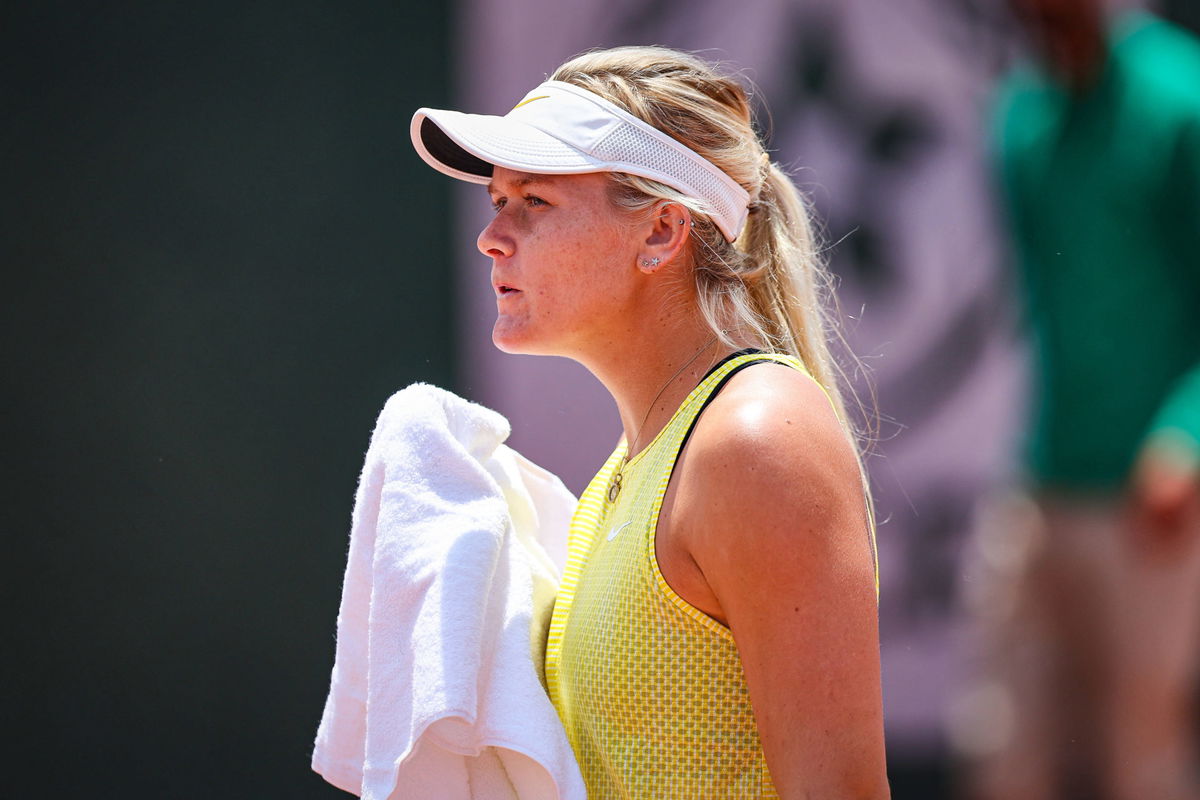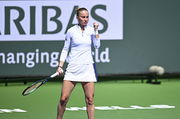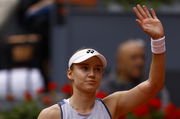
Imago
PEYTON STEARNS USA – Grand Prix Son Altesse Royale La Princesse Lalla Meryem – Rabat – Womens Tennis, WTA250, 22.5.2023, Rabat Union Sportive des Cheminots du Maroc – USCM, Morocco, *** PEYTON STEARNS USA Grand Prix Son Altesse Royale La Princesse Lalla Meryem Rabat Womens Tennis, WTA250, 22 5 2023, Rabat Union Sportive des Cheminots du Maroc USCM , Morocco, Copyright: xMathiasxSchulzx

Imago
PEYTON STEARNS USA – Grand Prix Son Altesse Royale La Princesse Lalla Meryem – Rabat – Womens Tennis, WTA250, 22.5.2023, Rabat Union Sportive des Cheminots du Maroc – USCM, Morocco, *** PEYTON STEARNS USA Grand Prix Son Altesse Royale La Princesse Lalla Meryem Rabat Womens Tennis, WTA250, 22 5 2023, Rabat Union Sportive des Cheminots du Maroc USCM , Morocco, Copyright: xMathiasxSchulzx
The 2025 season has seen rising frustration with electronic line calling. At the Australian Open, Sonay Kartal was baffled by an “out” call from a nearby court’s system. Clay season heated things up further. Alexander Zverev disputed a clear “in” call in Madrid, saying, “I believe there was a failure in the system.” Aryna Sabalenka even faced warnings for photographing disputed marks in Stuttgart. This tension continued in Rome, where Peyton Stearns faced a system glitch and manual override. What did she say?
Watch What’s Trending Now!
During her first-round match at the Italian Open, Stearns got into a heated debate after the electronic line-calling system malfunctioned. The chair umpire left her seat to check a ball mark-a move players had been told was not allowed-and ruled the shot out. Stearns didn’t contest losing the point but was visibly upset about the shifting standards. “It’s not about the point,” she said, during the match. “It’s about the rules. Last week in Madrid, they wouldn’t come down no matter what. And now suddenly they can?”
In a post-match chat with Tennis Channel, she added, “It’s been pretty adamant to all the players that the ref cannot go check the marks no matter what. And I remember in Madrid there were calls where the ball was in and the machine calls it out and you can’t check the mark.” But how does the system work?
ADVERTISEMENT
The electronic line calling uses high-speed cameras to track the ball, aiming for accuracy and faster play. It debuted publicly in 1974 and gained traction with Hawk-Eye at the 2006 US Open. Real-time “live” calls began trials in 2017 and are set for full ATP Tour use by 2025. Despite improvements, glitches and debates, especially on clay, persist-just like Stearns experienced.
— Peyton Stearns (@peyton_stearns) May 6, 2025
The basic tennis rule is players call their side, and doubt favors “in.” But tournaments vary in how they apply electronic calls and manual checks, especially after malfunctions on clay courts. Stearns summed it up: “It is what it is. Whatever the machine says, so I think that they don’t clarify the rules very well when you have circumstances like this.” While she’s frustrated, her experience isn’t unique this season.
ADVERTISEMENT
Interestingly, World No. 1 Aryna Sabalenka holds a slightly different view on the technology, showing the debate is far from settled.
ADVERTISEMENT
Sabalenka speaks out in favor of the line calling system
At the Porsche Tennis Grand Prix in Stuttgart, Aryna faced a tense moment over a disputed line call. With the score tied 3-3 against Elise Mertens, a volley was ruled out by a line judge. Sabalenka asked chair umpire Miriam Bley to review the mark, but Bley upheld the call. Frustrated, Sabalenka borrowed a phone from her team to photograph the ball mark, which earned her a code violation. Reflecting on the incident, she said, “When I shook her hand there was a very interesting look and a very strong handshake; I’ve never experienced that before.” Asked if she returned the grip, Sabalenka replied, “No, it’s fine. Why would I engage in a game like that with someone like her?”
Ahead of the 2025 Italian Open, Sabalenka shared her thoughts on live electronic line calling, comparing it to the controversy involving Alexander Zverev in Madrid. “I think in Madrid was much better. Me personally, I didn’t see any mistakes. I know there was the interesting situation with Alexander [Zverev], which is quite obvious to me that was a mistake. I think they figured out the system on another day.” She added, “My situation was much worse because the referee actually got down, checked the mark, and called it out, where it was obviously in. Not every referee are strong enough to accept their mistake and to, yeah, make a right call. Once again, we are all making mistakes and it’s okay.”
Top Stories
Carlos Alcaraz’s Split With Coach Resulted From ‘Major Disagreements’ With His Father

2x Grand Slam Champion Blames Polina Kudermetova’s Partner for Her Citizenship Switch

Elena Rybakina Makes Brutally Honest Confession About Herself: “Not Going to Scream”

Alexandra Eala Ends Nation’s 26-Year Drought With Historic Gold

Tennis Legends Set for Surprise Return to the Court in 2026 Featuring Roger Federer, Serena Williams & Others

Despite these incidents, Sabalenka prefers the Hawk-Eye system over traditional referees. She explained, “Right now, I prefer the Hawk-Eye system. I trust it more with most of the referees. Most of the referees, lately, I’ve had the best referees. Even if it wouldn’t be a Hawk-Eye system, I would trust them. I think maybe it’s better, so less tension between the player and the referee.” Her support for the technology highlights its role in reducing friction on court.
ADVERTISEMENT
But not everyone shares her view. Peyton Stearns experienced frustration with inconsistent rule enforcement during a similar electronic line-calling glitch in Rome. Still, the focus remains on progress in the tournament. Stearns is set to face Anna Kalinskaya in the round of 64. Will she breeze through or face more drama? Share your thoughts below!
ADVERTISEMENT
ADVERTISEMENT
ADVERTISEMENT

